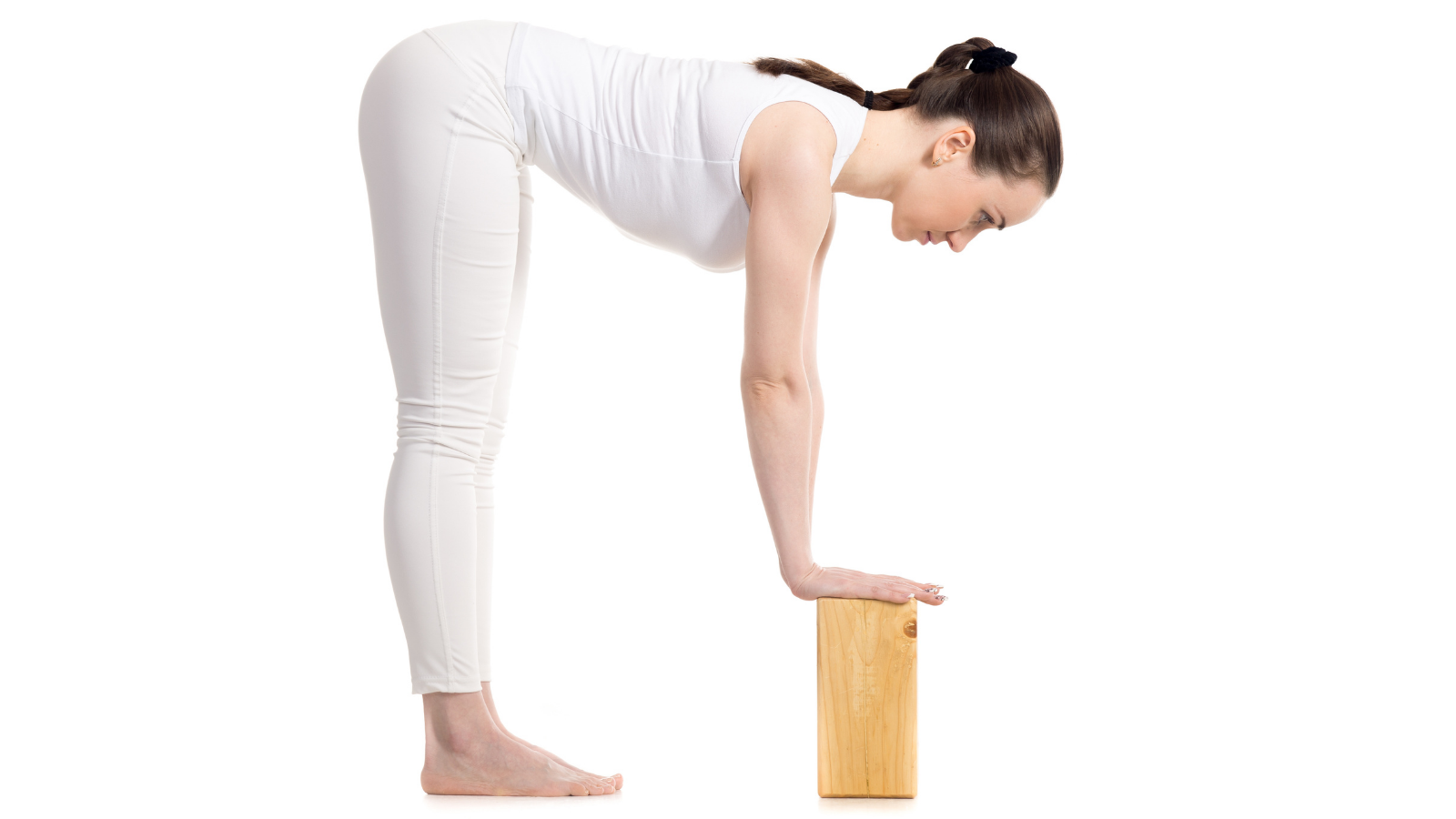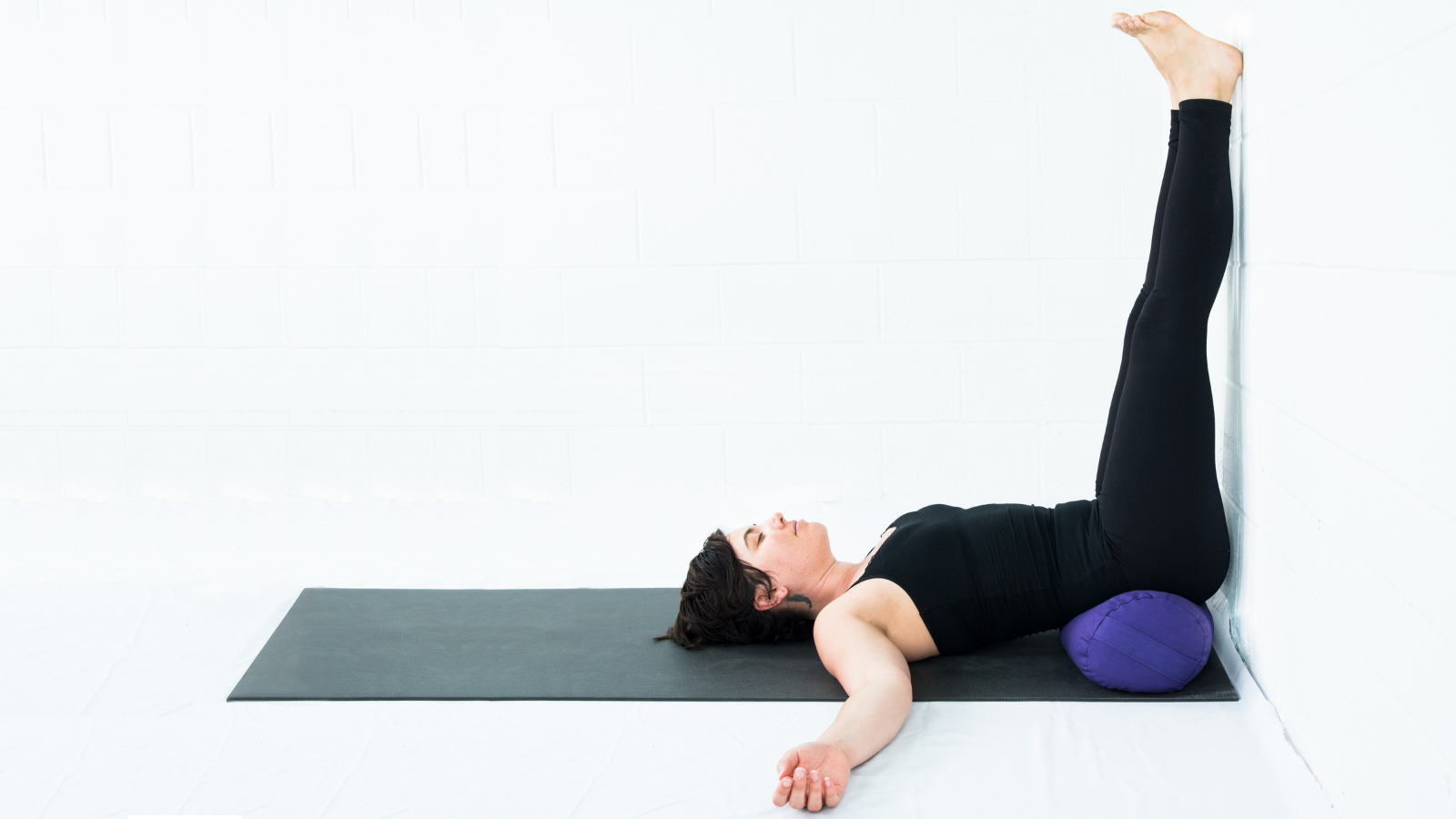View basket (0 items $0.00)

6 Yoga Practices to Relieve Menopause Symptoms
I grew up hearing stories from my older aunts about “the change” and how horrible it was. I remember them sharing night sweats and mood swings horror stories, all while my older uncles would make jokes about what their wives were dealing with.
Fortunately, both medicine and society have evolved. Now that I am entering my prime menopause years, I have a much different attitude toward the inevitable stage of life all women experience. I also have more options available to me to help find comfort with menopausal symptoms.
Menopause is the natural progression in a woman’s reproductive cycle. As we age, our ovaries produce less of the female hormones estrogen and progesterone, and menstrual periods stop. Once a woman’s periods have stopped for 12 consecutive months, she is considered to be in menopause. The time leading up to that point is called perimenopause.
Perimenopause normally starts sometime in a woman’s 30s, But it can start earlier if the ovaries have been surgically removed or if the patient is undergoing chemotherapy or radiation therapy.
Symptoms of Perimenopause and Menopause
Menopause is a natural phase of life rather than an illness. However, due to hormonal changes, most women will experience some form of symptoms associated with both perimenopause and menopause that signal this new phase of life.
-
Irregular monthly periods
-
Difficulty sleeping, including insomnia
-
Hot flashes, a sudden feeling of heat that feels as if it starts internally
-
Mood changes
-
Forgetfulness
-
Thinning hair
-
Weight gain
-
If symptoms are extreme and interfering with your quality of life, see your doctor. Medical interventions may include antidepressants, hormone therapy, or other medications to help with bone loss and heart disease, both of which become more prevalent with the onset of menopause.
Holistic Menopause Relief
While your doctor will most likely recommend you continue with regular yearly physicals, there are other non-medical treatments to help ease the symptoms of menopause.
-
Ask your doctor if Hormone Replacement Therapy (HRT) is an option for your menopausal symptoms.
-
Stop smoking to reduce your risk of heart disease.
-
Limit or avoid soft drinks to avoid leaching calcium from your bones.
-
Monitor your diet for foods that may cause bloating, sodium retention, or cause a spike in sugar levels.
-
Decrease or avoid alcohol to help limit hot flashes.
-
Ask your doctor about vitamin D and calcium supplements to prevent osteoporosis.
-
Stress management such as counseling, meditation, and enforcing a work/life balance will help with anxiety and mood swings.
-
Regular exercise will stabilize blood sugar levels, boost your mood, help you sleep better and give you more energy.
A regular yoga practice can provide flexibility, muscle strengthening, and necessary weight-bearing exercise during hormonal transition. Of course, any yoga practice should be based on what cues your body gives you. But during menopause, you may want to include more restorative poses in your practice.
Restorative poses tend to follow Ayurvedic principles of being cooling and calming to the body as a counterbalance to the pitta, or fiery energy within the body.
How to Practice Restorative Yoga For Menopause Relief
Supported Child’s Pose (Salamba Balasana)

Supported Child’s Pose will help quiet your anxious mind, encourage relaxation and provide a stretch to the back of the body.
-
Begin on your hands and knees with your knees wide in a V shape.
-
Place a large bolster or 3 to 5 folded blankets between your knees and snuggled between your thighs.
-
Drape your torso over the bolster or blankets, making any adjustments necessary to be your most comfortable.
-
Rest your head to whichever side feels best.
-
Allow yourself to rest here until you feel your body begin to relax and soften.
Wide-Angle Seated Forward Bend Pose (Upavistha Konasana)

Wide-Angle Seated Forward Bend Pose is another forward fold to help calm your mind. In addition, this pose will also strengthen your spine and stretch the insides and backs of your legs.
-
Sitting tall in Staff Pose (Dandasana), place your hands on the mat on each side of your body to support yourself as you widen your legs into a wide V shape.
-
If your low back is rounding backward, prop yourself up on a folded blanket or bolster.
-
Engage your thighs to spiral outward, keeping your knees facing toward the ceiling. Then, flex your feet and push out through your heels.
-
Bending from your hip joints, walk your hands forward between your legs. Lengthen through the back of your body.
-
Walk your hands only as far as is comfortable.
-
Once you reach a stopping point, rest your hands or elbows on the floor or on yoga blocks.
-
For additional comfort, rest your forehead onto the short end of a bolster.
-
Stay in this pose for 5 to 8 deep breaths.
Standing Forward Bend Pose (Uttanasana)

Standing Forward Bend Pose is a yogi’s go-to pose to relieve anxiety and depression, reduce fatigue, provide relief for headaches and insomnia. It also provides an excellent stretch for the hamstrings, calves, hips, and back.
-
Stand tall in Mountain Pose (Tadasana) with your hands on your hips.
-
Slowly and gently bend forward from your hip joints, keeping your torso long.
-
Place your hands onto your shins, blocks, or the yoga mat.
-
If you feel discomfort in your back, bend your knees slightly.
-
Gently release your neck from side to side in a “no” motion and then in a “yes” motion.
-
Find stillness in the pose for 5 to 8 breaths.
-
When you are ready to return to Tadasana, bend your knees a bit more deeply and return your hands to your hips.
-
Keeping your back flat, inhale as you return to standing.
Bridge Pose (Setu Bandha Sarvangasana)

As a backbend, Bridge Pose is considered an energizing pose. However, this supported version will provide restorative benefits. These include stretching the chest, neck, and spine; relieving menstrual discomfort; reducing insomnia, and providing therapeutic benefits for high blood pressure and osteoporosis. Be sure to have a yoga block within reach while preparing for this yoga pose.
-
Lie on the mat on your back and bend your knees, placing your feet hips-distance apart.
-
Exhale as you push through your feet and the backs of your arms and lift your hips off the floor.
-
Place the block at its lowest level, directly under your sacrum. Make sure the block is wide across your sacroiliac joint so that it supports the entire joint.
-
Your arms can rest comfortably at your sides.
-
If this is comfortable, you can increase the height of the block for additional stretch.
-
If at any time you feel any back pain or agitation, lower or remove the block.
-
To remove the block, press through your feet once again, lifting your hips.
-
Remove the block and return your hips to the floor.
Legs Up the Wall Pose (Viparita Karani)

Finding final relaxation in Legs Up The Wall Pose will reduce anxiety, relieve headaches and lower back soreness, and promote rest and sleep.
-
Sit on your yoga mat with the right side of your body as close to a wall as possible.
-
Pull your knees up to your chest and lie on your left side.
-
Swing your legs up straight onto the wall, with your back flat on the mat and your buttocks touching the wall.
-
Allow your arms to lie naturally at your sides.
-
An eye pillow over your eyes can promote additional relaxation in this pose.
-
Stay in the pose as long as it feels comfortable.
Cooling Breath (Sithali)
This pranayama practice may be helpful to counteract hot flashes.
-
Find a comfortable seated position. Place your hands in your lap and close your eyes.
-
Drop your chin slightly toward your chest and form an O shape with your mouth.
-
If possible, curl your tongue. The ability to curl your tongue is a genetic trait, so keep your tongue flat on the bottom of your mouth if that isn't possible.
-
Inhale through our open mouth as you gently and slightly raise your chin.
-
Close your lips and exhale slowly through your nose as you gently and slightly lower your chin.
-
Repeat for as long as comfortable.
More helpful yoga practice tips and inspiration from Jennifer Williams-Fields-Restorative Yoga: A Sequence to Build and Maintain Resilience.
 Jennifer Williams-Fields E-RYT 200 is passionate about writing, yoga, traveling, public speaking, and being a fabulous single momma to six super kids. Doing it all at one time, however, is her great struggle. She has been teaching yoga since 2005 and writing since she first picked up a crayon. Although her life is a sort of organized chaos, she loves every minute of the craziness and is grateful for all she’s learned along the way. Her first book, "Creating A Joyful Life: The Lessons I Learned From Yoga and My Mom," is now available on Amazon. She has had her essays featured on Yahoo! and Dr. Oz The Good Life. She is a regular writer for Elephant Journal Magazine, Your Tango, and YogaUOnline. See more from Jennifer at jenniferwilliamsfields.com.
Jennifer Williams-Fields E-RYT 200 is passionate about writing, yoga, traveling, public speaking, and being a fabulous single momma to six super kids. Doing it all at one time, however, is her great struggle. She has been teaching yoga since 2005 and writing since she first picked up a crayon. Although her life is a sort of organized chaos, she loves every minute of the craziness and is grateful for all she’s learned along the way. Her first book, "Creating A Joyful Life: The Lessons I Learned From Yoga and My Mom," is now available on Amazon. She has had her essays featured on Yahoo! and Dr. Oz The Good Life. She is a regular writer for Elephant Journal Magazine, Your Tango, and YogaUOnline. See more from Jennifer at jenniferwilliamsfields.com.
Featured Courses








